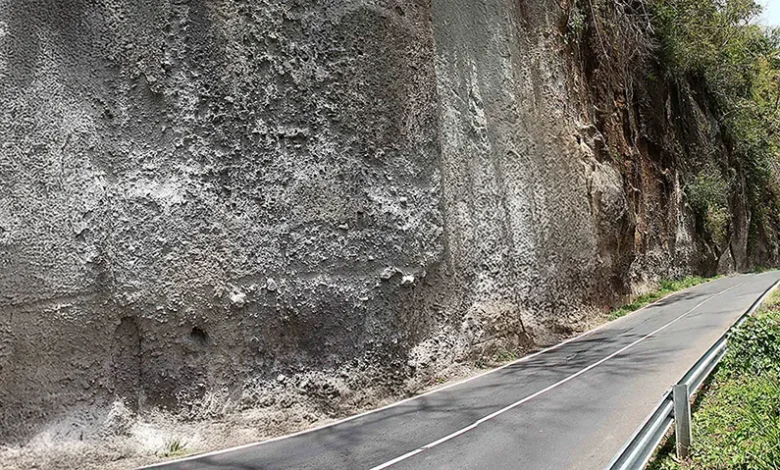Roseau Tuff

The Roseau Tuff is a significant volcanic deposit in Dominica, resulting from a series of explosive eruptions between approximately 46,000 and 26,000 years ago. This extensive pyroclastic formation has played a crucial role in shaping the island’s geological landscape, including the formation of the Wotten Waven Caldera.
Roseau Tuff’s Geological Formation
The Roseau Tuff is divided into three distinct units based on their composition and deposition patterns:
- Unit 1: Dominated by thick welded ignimbrites channelled between the Morne Trois Pitons and Morne Anglais volcanoes. This unit is estimated to be older than 46,000 years before the present.
- Unit 2: Preceded by Plinian fall activity, these ignimbrites have a widespread aerial extent and are well exposed in the Goodwill quarry just north of Roseau. The deposits date between 46,000 and 26,000 years.
- Unit 3: Characterized by pumiceous deposits overlain by extensive block and ash flow deposits, suggesting the eruption concluded with the extrusion of Pelean domes from the Micotrin Dome.
Formation of Wotten Waven Caldera
The eruption of the Roseau Tuff led to the formation of the Wotten Waven Caldera through subsidence caused by the massive ejection of volcanic material. The caldera measures approximately 7 km by 4.5 km and is elongated west-southwest, parallel to a chain of Pelean volcanoes along the southern margin of the Central Graben.
Distribution and Composition
Significant outcrops of the Roseau Tuff are found outside the Wotten Waven-Roseau area, including thick sequences on the east coast near Grand Fond and Rosalie, and on the south coast at Grand Bay. The ignimbrites consist of welded and non-welded ash-flow tuffs, pumice, and volcanic ash, indicating highly explosive eruptions that reshaped the island’s topography.
Recent Activity
More recent eruptions from the Wotten Waven Caldera produced small-volume block and ash flow deposits dated at 1,160 and 1,020–1,050 years B.P. These deposits are exposed in the northern part of the caldera and are associated with eruptions from the Micotrin Domes and vents along the caldera’s northern margin.
In December 2018, a swarm of volcanic earthquakes originated from the Roseau Valley/Wotten Waven Caldera area, with activity peaking on June 15, 2019, when more than 500 events were recorded in a 24-hour period. This recent activity highlights the ongoing volcanic nature of the region.
Significance in Dominica
The Roseau Tuff is integral to understanding Dominica’s volcanic history and potential geothermal resources. The area around the Wotten Waven Caldera, including villages like Laudat, Trafalgar, Morne Prosper, and Wotten Waven, is known for its Natural Sulphur Springs and Geothermal Features. These contribute to the island’s Sustainable Tourism and are key sites for potential geothermal energy development.




